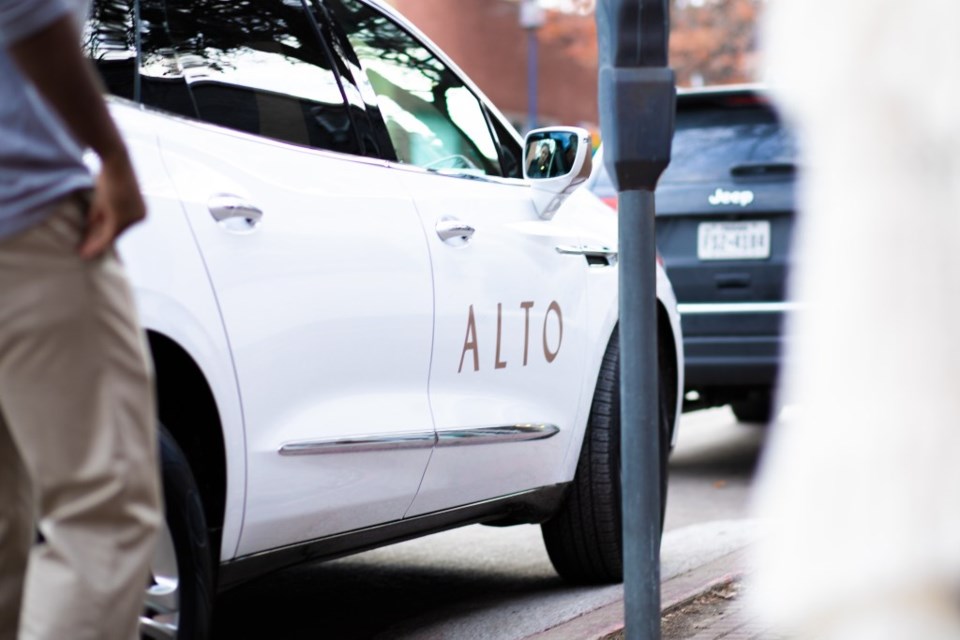
As the world begins to open back up, we are seeing more traffic and congestion on the roads than we have in over a year. With public transportation and rideshare services, consumers can cut down on their pollution output and fossil fuel usage in an effort to combat climate change.
One Dallas-based rideshare company is on a mission to create a more environmentally conscious rideshare experience for its drivers and riders.
Alto, which launched in 2018 as a more “upscale” rideshare service, plans to exclusively transition to all electric vehicles by 2023.
As of now, Alto operates in Dallas, Houston and Los Angeles, with plans to expand to two more unknown cities at the latter half of this year, and 10 more cities by the end of 2022.
It's been reported that Alto closed a $45 million round of Series B financing to round out its funding in its expansion and transition efforts to $60 million.
“We think [electric vehicles are] the more sustainable option for cities, for the environment and for the world,” says Alto COO Alex Halbardier. “We believe that since that's where things are going, it's going to be a better choice for operating in big cities.”
When Halbardier launched Alto along with Will Coleman back in 2019, their plan was to create a safer riding option for women who addressed concerns with taking rideshare services. In a survey by Alarms.org, 23 percent of women who rode in Uber rides reported an uncomfortable encounter with a driver to Uber and 13 percent of women Uber riders said they were made to feel uncomfortable during their rides. For Lyft, 15 percent of women riders reported uncomfortable encounters with drivers and 7 percent reported feeling uncomfortable during their rides.

Each Alto driver is background checked and trained according to Alto standards and drivers only drive vehicles with five-star crash test ratings. Riders can customize the music playing in the car according to their mood.
Transitioning to a totally electric model is just one further step in Alto’s luxurious ride share model, and Halbardier says the process for pivoting to electric has already begun. Though, she says she is unsure which car models Alto will offer.
Alto is currently in talks with different electric vehicles, evaluating components such as battery life, customer experience, configuration and availability.
“It's a bit more complicated than just kind of plopping down a different car type on the road,” Halbardier says. “You need to think about how your entire operation is going to support that, right., you need to think about how you're accessing the electrical grid, and when you're using power and your cost structure and how your app supports different vehicle types during a transition period.”
While rideshares are often hailed for getting people to their destinations in a safe, timely manner — in the event they've been drinking, leaving from the airport after arriving to a different city, or whatever reason--their environmental impact has remained the subject of controversy. A 2020 study by the Union of Concerned Scientists revealed that trips via rideshare generated nearly 70 percent more pollution than the trips they displace.
With their efforts to transition to all electric vehicles, Alto hopes to combat the detrimental effects their competitors have shown to have on the environment.
In addition to taking care of riders, Alto is committed to taking care of their drivers. While Uber and Lyft hire contracted drivers, Alto’s drivers are “W2 employees” who receive company benefits and a base pay, as opposed to only relying on driver fares and tips.
“It’s a mix of full time and part time [drivers,]” Halbardier says, “but those individuals have access to benefits, they receive consistent pay and visibility into what their paycheck will be. They don't have to scrap for their next ride. If we're not busy one night, and we staffed them, they get paid anyway. It's like working a job at a hotel, or a restaurant or Starbucks. And we're trying to replicate that mobility, because we really believe that's the right thing to do; to drive a better driver experience and a better customer experience.”
Remember when Alto offered free rides to the polls on election day?



